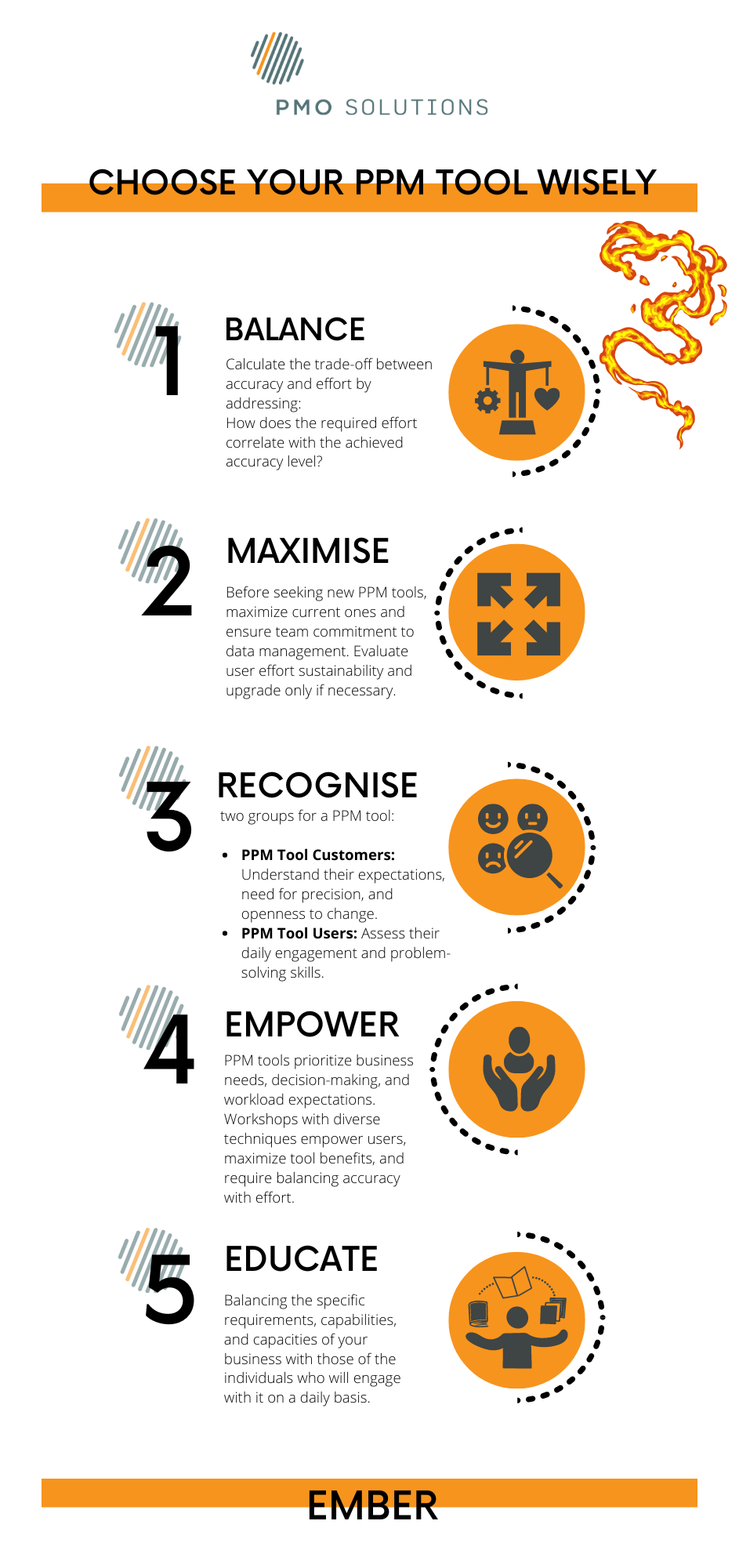10 June 2017
7 Key Issues That Can Hinder Business growth and quick fixes that PMO can implement

Whether a company is new, well-established, or rapidly growing, they can all get caught up in complex systems and processes when delivering a project. Unfortunately, these convoluted systems often lead to isolated project management methodologies, processes, and tools.
As a result, seven primary issues arise that ultimately hinder business growth. These include:
-
1- Employee Productivity
Lack of integrity and governance can lead to increased manual tasks and a more substantial likelihood of duplicated tasks. This wastes valuable time and causes employees to lose motivation and productivity.
Quick Fixes
To address this issue, here are some quick fixes:
- Establish clear policies and procedures: Having clear policies and procedures can help ensure everyone is on the same page and understands what is expected of them.
- Implement automation tools: Automation tools can help streamline processes and reduce the need for manual tasks, saving time and improving efficiency.
- Provide training and support: Providing training and support to employees can help them understand their roles and responsibilities better, leading to increased motivation and productivity.
By implementing these quick fixes, organizations can improve their integrity and governance, reduce manual tasks, and increase employee productivity.
-
2- Informal Knowledge Management Dependency
Without aligned governance or systems, each employee focuses on delivering a project on their own accord, leading to valuable project information being stored in non-accessible locations. If an employee leaves the company, this knowledge disappears with them.
Quick fixes
When there is a lack of aligned governance or systems in place, employees tend to work on projects independently, resulting in valuable project information being stored in non-accessible locations. This can lead to a loss of knowledge when an employee leaves the company.
To address this issue, it is crucial to establish clear governance and systems that promote collaboration and knowledge sharing. Here are some quick fixes that can help:
- Implement a centralized project management system that allows all team members to access and contribute to project information. You don't have to go overboard. Consider how you can utilize your existing technology resources to establish a centralized system.
- Encourage regular team meetings and status updates to ensure everyone is on the same page and aware of project progress.
- Develop a knowledge management system that captures and organizes essential project information for future reference.
- Provide training and resources to help employees understand the importance of aligned governance and systems and how they can contribute to their success.
By implementing these quick fixes, organizations can improve collaboration, increase knowledge sharing, and reduce the risk of losing valuable project information.
-
3- Lack of Real-Time Visibility
Unintegrated governance and systems lead to overlapping data sources, making it difficult for businesses to obtain a projection of their performance or pipeline in a timely fashion./
Quick Fix
By implementing integrated governance and systems, businesses can streamline their data sources and ensure that all information is up-to-date and accurate. This will enable them to obtain a clear projection of their performance and pipeline, allowing for confident decision-making and improved business outcomes.
Don't let unintegrated governance and systems hold your business back. Take action today and implement an integrated approach for better results. You can make it happen using even the most basic tools with a consistent solution. A complex system is not necessary.
-
4- Increased Client Churn
Client satisfaction is crucial for a company's ongoing prosperity. Providing exceptional client service is essential to prevent clients from taking their business elsewhere. If clients cannot obtain accurate information quickly, they may be inclined to move their business to a competitor.
Quick fixes:
If your business is engaged in internal or external projects, it's imperative to remember that your customer should always be the top priority. Any project that fails to impact your customer, whether direct or indirect positively, must be stopped immediately.
To swiftly address the issue of client churn, follow these steps:
- Compile a list of all business initiatives and projects.
- Evaluate if they impact your customer and the services your business provides. If not, terminate the project.
- Determine the customer's requirements for understanding the project's progress, outcomes, or roadmap.
- Establish a mechanism to involve your customer early in the project.
Remember, by prioritizing your customer's needs, and you can ensure that your business stays on track and achieves success.
-
5- Lack of Information Reliability
Unintegrated governance causes multiple information sources, resulting in disjointed methodologies and project result outputs.
Quick Fixes:
When managing a project, it is crucial to have reliable information to make informed decisions. However, sometimes the information available may not be entirely accurate or up-to-date. Here are some quick fixes to address this issue:
- Communicate with stakeholders: Establish an effective communication and update mechanism with stakeholders to avoid duplications and ambiguity.
- Verify information: Make sure the information you receive tells a complete story of the project and is connected to all aspects of the project. For example, avoid receiving forecasts for projects that have already been completed!
- Update documentation: Establish a mechanism that ensures project documents remain consistent and up-to-date without burdening your delivery team with excessive work.
- Use technology wisely: Technology can be a powerful tool in mitigating the risk of unreliable information. However, it can also create a data monster that is messy and unrelated. To avoid this, it's essential to understand the projects, programs, and portfolio artifacts, as well as the information businesses require to make informed decisions at different levels. By knowing what story needs to be told, you can ensure that technology is used effectively and efficiently.
- Establish clear communication channels: Ensure that there are clear communication channels between team members and stakeholders. This can help prevent misunderstandings and ensure everyone is on the same page.
- Always clarify assumptions: unclear assumptions can lead to business failure. They are detrimental, so ensure the project team and business are crystal clear on all assumptions and avoid making any assumptions!
By implementing these quick fixes, you can improve the reliability of information in managing projects and make more informed decisions.
-
6- Gaps Between Objectives and Deliverables
Unintegrated strategy and delivery practices create a significant gap between strategic business objectives and project/program delivery. This inconsistency leads to a lack of accountability in delivering business benefits.
Quick Fixes
This gap inconsistency leads to a lack of accountability in delivering business benefits. To address this issue, it is crucial to implement quick fixes to help align strategy and delivery practices.
Some of the quick fixes that can be implemented include:
- Establishing clear communication channels between the business and delivery teams
- Defining measurable outcomes and success criteria for each project/program
- Regularly reviewing progress against these outcomes and success criteria
- Ensuring that all stakeholders are aware of their roles and responsibilities
- Providing training and support ensures that all team members have the necessary skills and knowledge to deliver on the project/program objectives.
By implementing these quick fixes, businesses can improve their strategy and delivery practices, leading to better alignment between strategic objectives and project/program delivery. This will ultimately result in greater accountability and improved business benefits.
-
7- Complexities and Costs
Incongruent practices waste time and money trying to integrate and maintain uniform processes, costing significant amounts on systems, software, and labour.
Quick Fixes
Incongruent practices can waste time and money trying to integrate and maintain uniform processes. This can cost significant amounts on systems, software, and labour. To avoid these issues, it is crucial to implement quick fixes that can help streamline processes and reduce costs.
One effective solution is to establish clear communication channels between departments and teams. This can help ensure everyone is on the same page and working towards the same goals. Additionally, implementing standardized procedures and protocols can help ensure consistency and reduce errors.
Another critical strategy is to invest in technology solutions that can automate repetitive tasks and streamline workflows. This can help reduce the need for manual labour and free up resources for more strategic initiatives.
By taking these steps, organizations can improve their efficiency and reduce costs associated with incongruent practices. With a focus on continuous improvement and innovation, businesses can stay ahead of the competition and achieve long-term success.
If you require assistance with implementing any of these speedy solutions, please do not hesitate to reach out to us.
Read our
POPULAR BLOGS

See How We Can Help
CONTACT US
PLEASE ENTER YOUR DETAILS
We will get back to you as soon as possible.
Please try again later.






